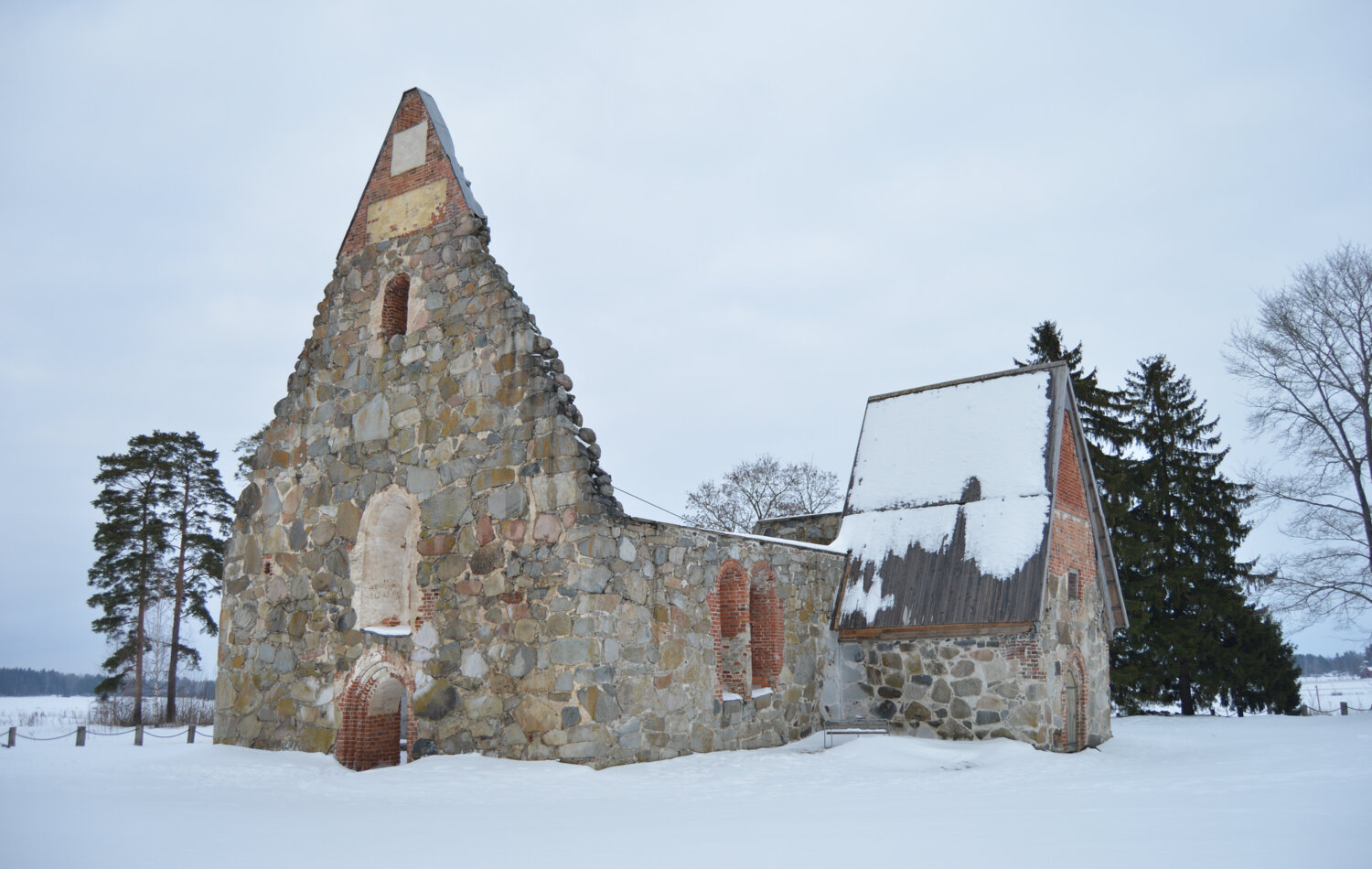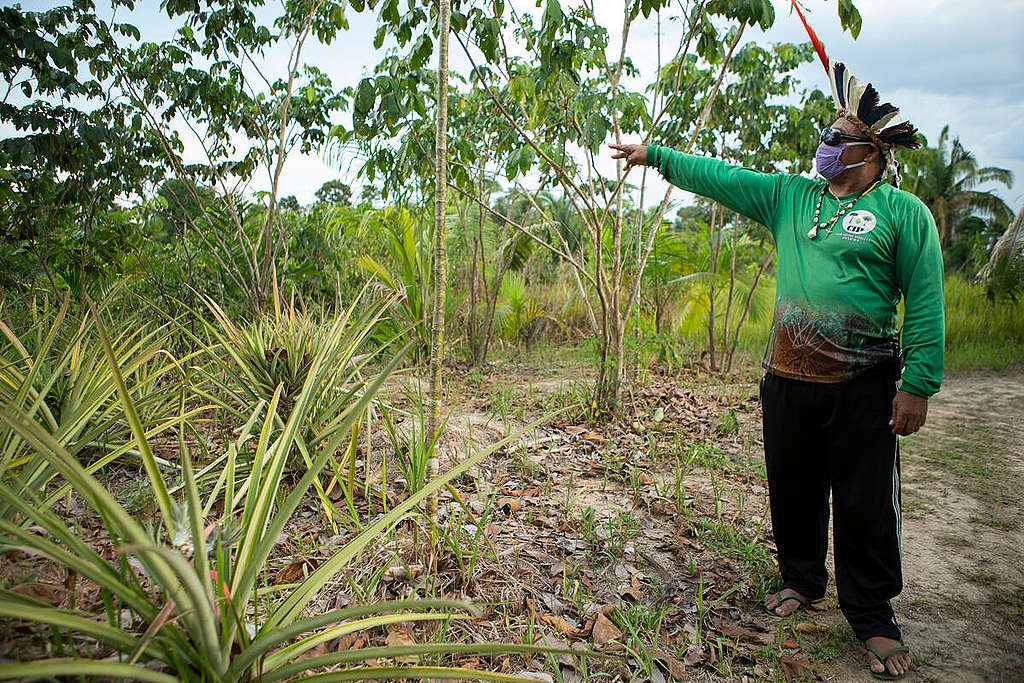
Raimundo Nonato de Oliveira is Chief Puraka. The name, of Tupi origin, comes from an electric fish strong enough to kill a horse. Despite his name, Puraka is a calm and slow-spoken man. Leader of one of the 28 villages in the Caititu Indigenous Land, in Lábrea, the south of Amazonas state, he and his people value what is necessary and cannot imagine living anywhere else. “We feel good when we’re like this. We feel good when we’re in nature.”
Nestled in the middle of the forest, Lábrea is the last stop on the Trans-Amazon Highway, an unfinished project from the military regime period. The idea was to build a network of farming villages, pave the road, and bring development to the region. The project was abandoned in the mid-1970s, but not before tearing through nearly 4,000 km of forest. With the motto “a land without men for men without land,” the government-encouraged migration brought a mass of individuals from other parts of the country to the region. The promise of a better life, however, never came to fruition, leaving the population without development opportunities and increasing the violence in rural areas. So the peace enjoyed by the Puraka and the other 4,800 indigenous Apurinãs is under constant threat.
The southern Amazon is currently the region most affected by deforestation and fires. The area is targeted by an economy of destruction that preys on nature. First, they cut down the noblest trees to sell. Then they cut down the remaining vegetation, wait for it to dry, and set it on fire. After the area has been “cleaned,” they move cattle in. They can start planting grain or sell the areas they have illegally occupied to other farmers in a few years. It’s an endless cycle. The more the market demands, the more flexible the laws are made, fewer inspections occur, and more forest is cut down. The gear keeps turning full steam ahead. Puraka and his people don’t act that way. They farm using an agroforestry systems technique, used by Native Peoples for millennia. This technique works in balance with the forest and helps to restore the soil and biodiversity of previously degraded areas, in addition to producing food. The production yields more than they need and, thus, they manage to sell the surplus in Lábrea and even to the city hall.
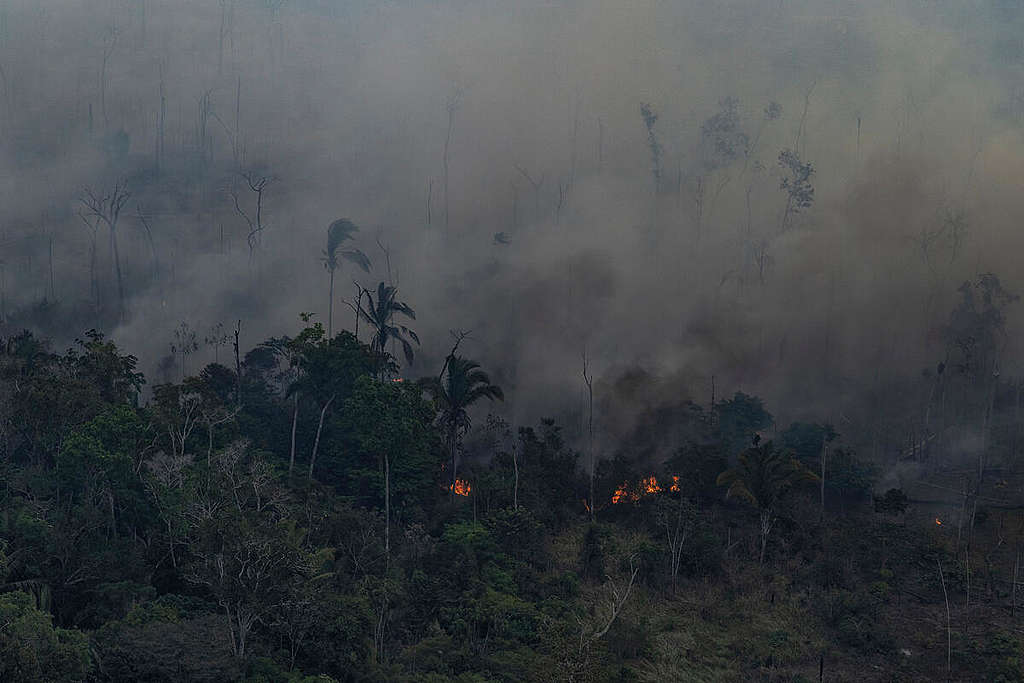
New Times
But it hasn’t always been this way. Until recently, the Apurinã People made their living essentially by processing cassava and sugar cane. Over the years, the contact with non-Indigenous People has caused them to lose part of their traditions, which have now been revived with the reintroduction of the agroforestry system. “We have almost 15,000 plants saving our land, our fresh air. It has been the greatest satisfaction of my life,” said Puraka.
Magno de Lima dos Santos, an indigenist with Operação Amazônia Nativa (OPAN) says that the reintroduction of agroforestry has improved the quality of food the Apurinã people consume. “It means bringing diversity, protecting culture. Not too long ago, the production system here was limited to single-crop fields and a few small pineapple trees. Maybe potatoes here and there. So we were able to revive a more distant past and bring this model to the present.”
The food has gotten better, but the tranquility at the Caititu Indigenous Land is still at risk. Puraka and his people are not kept well-informed on political decisions, but they suffer their consequences. Although it was the first land to be demarcated in the region in 1991, the threats on their territory have never stopped. The area is close to Lábrea’s city limits and in the vicinity of agriculture advancing from Rondônia to southern Amazonas.
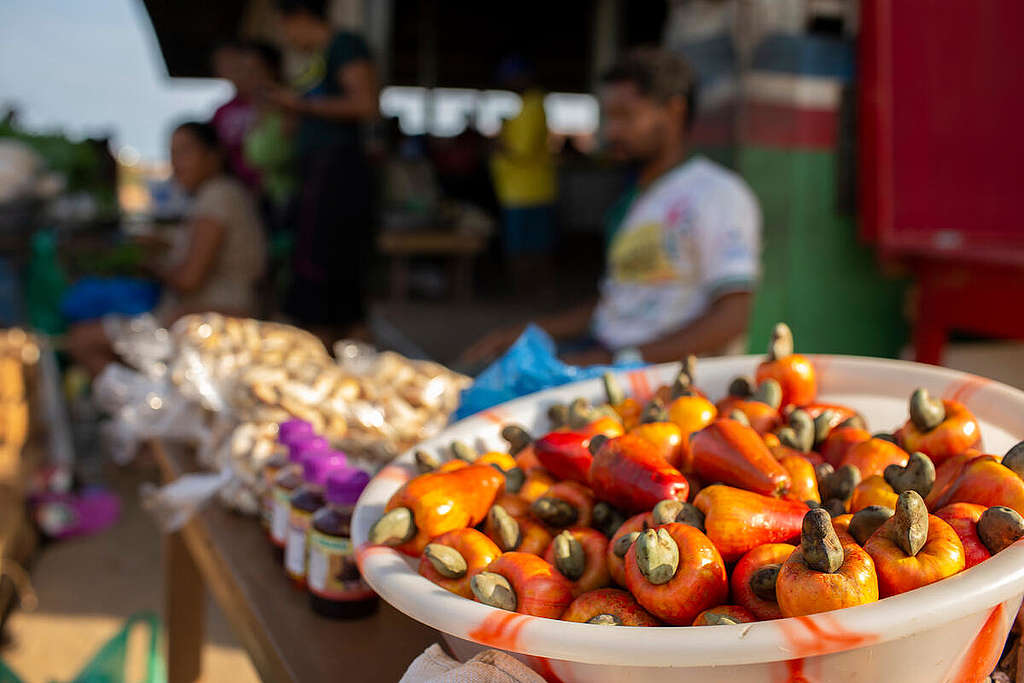
A project to create an agribusiness hub in southern Amazonas, which the rural caucus in Congress began designing in 2019 and was supported by the Bolsonaro administration, has become a new frontier for deforestation, land grabbing, and land conflicts in the Amazon.
Puraka fears for his people. “There’s a guy here in Lábrea who says that this is all his. He said that one day he’ll take it all (…) and with everything that is happening, there is a chance that might actually happen someday.” Other Indigenous People, like the Tenharim, face the same problem. “Our territories are threatened by invaders. We are surrounded by farms, and our territory has standing forests. Because of our territory, the forests are valuable. There’s wealth there, whether from natural resources or from our economy,” said Antonio Enésio Tenharim, general coordinator of the Alto Madeira Indigenous Peoples Organization (Organização dos Povos Indígenas do Alto Madeira – OPIAM).
The Indigenous People’s fear is well-founded. In 2020, deforestation in the Amazon was on the largest scale since 2008. This destruction process isn’t impacting just the Amazon. The cycle of deforestation makes less water evaporate from the forest into the clouds that head to the Southeast of South America, causing drought across the continent. According to the Electric Sector Monitoring Committee, from September 2020 to March this year, Brazil had the lowest rainy-season water inflow into reservoirs in the last 91 years. In the countryside of São Paulo, 14 cities face water rationing measures.
The devastation for new pastures and large plantations worsens this scenario. The United Nations (UN) estimates that agribusiness consumes 70% of the planet’s freshwater. On the other hand, the agroecological system preserves the vegetation and allows the soil to become a reservoir itself. “We have been watching how society has been affected by the water crisis. By clearing forests, we are contributing to more frequent extreme weather events,” said Cristiane Mazzetti, spokesperson for Greenpeace’s Amazon Campaign.
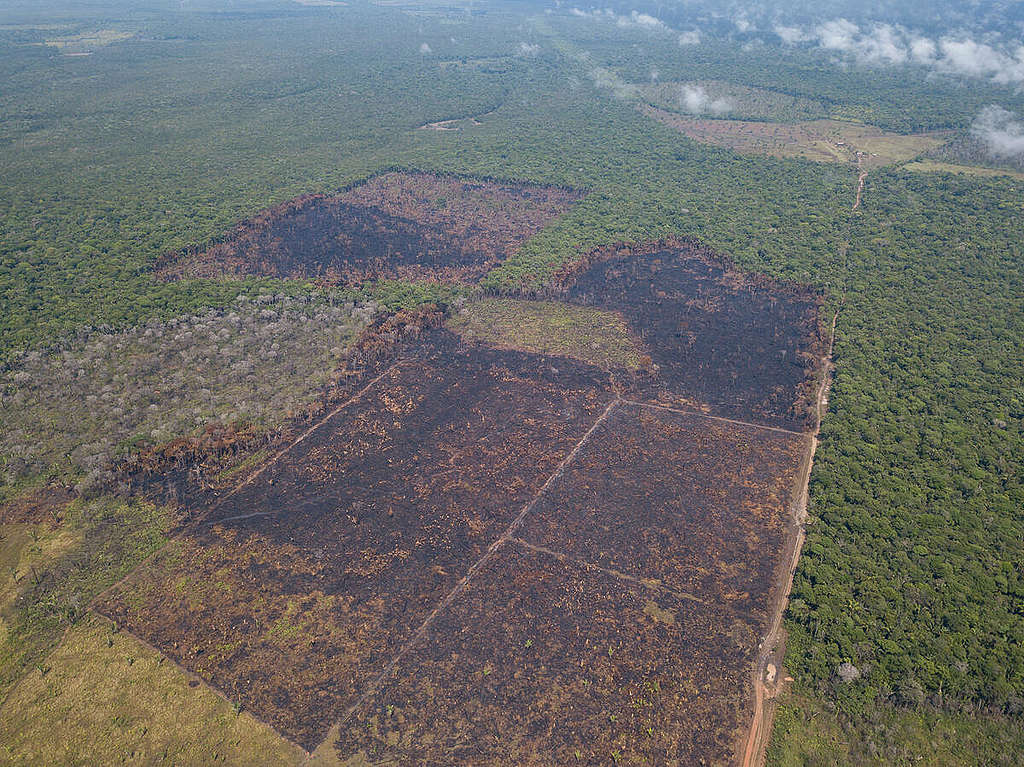
More Obstacles
The destruction-based development that threatens Puraka and the Apurinãs is also unbeneficial to low-income non-Indigenous People. The destruction economics has a high environmental cost and concentrates the wealth in the hands of a few. Pará, the state with higher rates of destruction of the Amazon, has the 23rd worst Human Development Index (HDI) of all 27 states in the country, according to the Human Development Atlas.
In the Senate, a pending bill may aggravate the situation. Approved by Brazil’s House of Representatives, the text makes the rules for legalizing invaded land more flexible, which in practice encourages more destruction. Furthermore, the discussion of the so-called Marco Temporal in the Supreme Federal Court threatens the rights of Indigenous Peoples to their territories.
If approved, these changes could worsen HDI statistics in the North. But it didn’t have to be that way. “The Amazon has an enormous potential to produce with the forest standing, through socio-biodiversity product chains that conserve the forest that – if well structured – generate income and opportunities for local communities. But for these chains to be fostered, the forest must be protected, and territorial rights must be guaranteed,” said Greenpeace’s spokesperson, Cristiane Mazzetti.
What are socio-biodiversity chains?
“The Amazonian biodiversity production chains are worked by Indigenous Peoples or non-Indigenous extractivists, traditional Peoples within their territories using management practices. Managing fishing practices, nuts, berries and rubber, are examples of this production,” said Magno.
OPAN has worked to consolidate production chains with the region’s peoples, including managing pirarucu fishing with the Paumari People and Brazilian nuts at the Ituxi Extractive Reserve and the Caititu Indigenous territory.
Magno remembers the increase in pirarucu fish, known as the Amazon cod. “The Paumari People’s (the region’s indigenous people) first pirarucu count in 2009 identified around two hundred and seventy-six fish. It showed that predatory fishing practices caused extreme impacts on the environment. Their last recorded catch last year was over seven thousand fish. This year, IBAMA authorized a six-hundred-and-fifteen-fish quota, about 30% of the total number of adult fish. So, you can see that the fishing quota released this year is practically 200% more than the total of the fish monitored at the beginning.”
Francimir Martins dos Santos works at the Ituxi Extractive Reserve in Lábrea (AM). He knows that the rational use of the forest is useful to local residents. “We started with a small group, and the group is much larger today. After managing good practices, we were able to sell the nuts for more than double the price. Our dream is to see the forest standing and the management techniques working to bring in a source of income.”
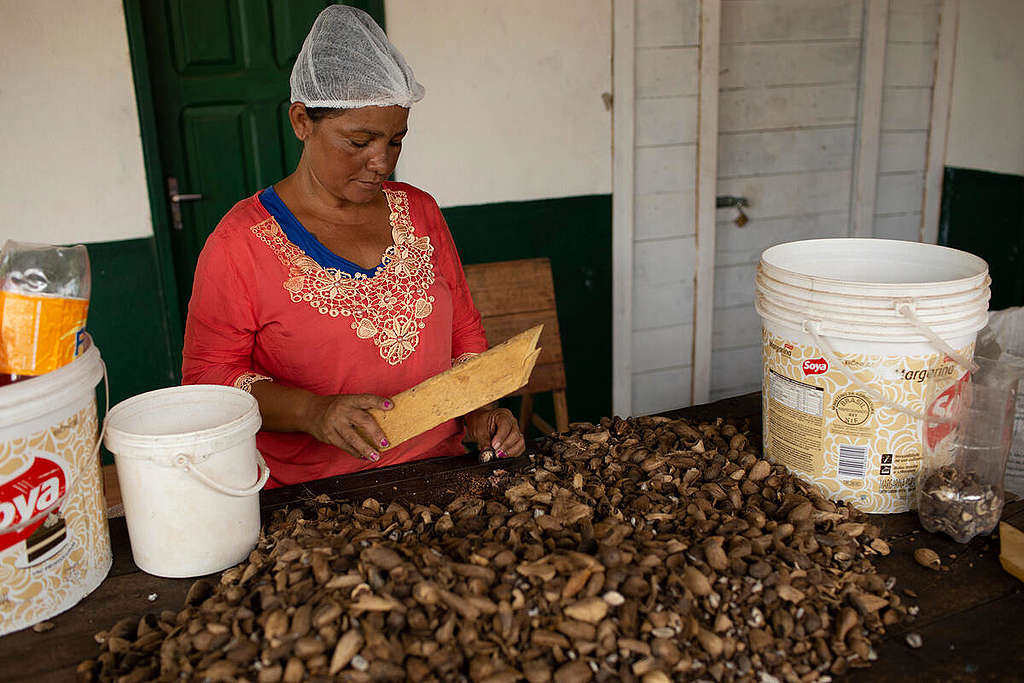
The socio-biodiversity chains and agroecological production are potentially more inclusive business models than industrial agriculture. Family farming occupies less than 1/4 of the land used for agriculture in Brazil today, yet, it produces most of the food consumed in Brazil and represents 67% of jobs in the sector in the country, according to the latest Brazilian Agricultural Census (2017).
However, only 25% of the Brazilian Development Bank’s (BNDES) Harvest Plan resources go to small producers, and only 23% of national production revenue goes to this group, which employs around 10 million people.
Two important international events, the Convention on Biological Diversity and the United Nations Climate Conference, call on society to reflect on the currently chosen development paths. “Real solutions like these practices from family farmers and forest Peoples need to be fostered alongside the end of deforestation,” said Cristiane.
Puraka and his people do not destroy the forest around them, and, like other Amazonian Peoples, they have realized a human need shared by all Peoples and cultures. “We feel sick right when we arrive in a capital city because just doing that is out of our rhythm. We live here, where everything is open air. Here is where we feel good, you know? Indigenous People feel good this way.” Puraka knows what he’s talking about.






